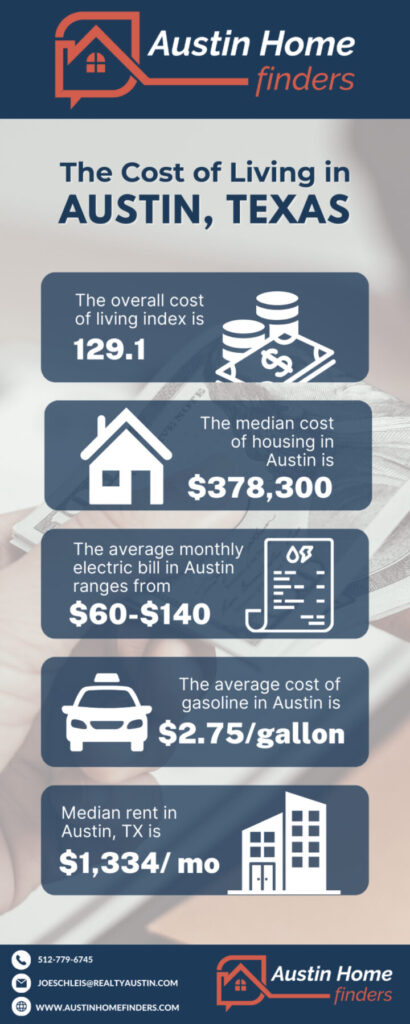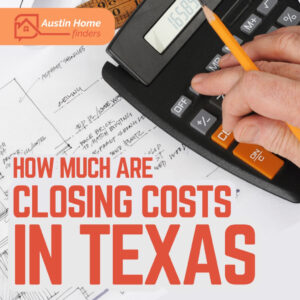An important question to ask when moving to another city like ATX is, “Is Austin, Texas, an expensive place to live?” The simple answer is, it depends on where you’re moving from.
If you look at the cost of living index below and see the overall cost of living in Austin, TX, which is 29% higher than the national average, it seems like moving to this city will be quite expensive.
However, if you are moving to Austin from New York City, you’ll find living here to be more affordable because its cost of living is 33.6% lower compared to NYC.
Overall Cost of Living in Austin, Texas
| Cost of Living | Austin | Texas | United States |
|---|---|---|---|
| Overall | 129.1 | 94.2 | 100.0 |
| Grocery | 96.7 | 93.7 | 100.0 |
| Health | 101.6 | 100.0 | 100.0 |
| Housing | 189.0 | 83.5 | 100.0 |
| Utilities | 99.1 | 99.2 | 100.0 |
| Transportation | 109.9 | 103.3 | 100.0 |
| Miscellaneous | 105.9 | 83.2 | 100.0 |
Factors Influencing Living Costs in Austin
Many basic expenses influence the affordability of living in a particular location. Read on to learn how these expenses affect the cost of living in Austin, TX.
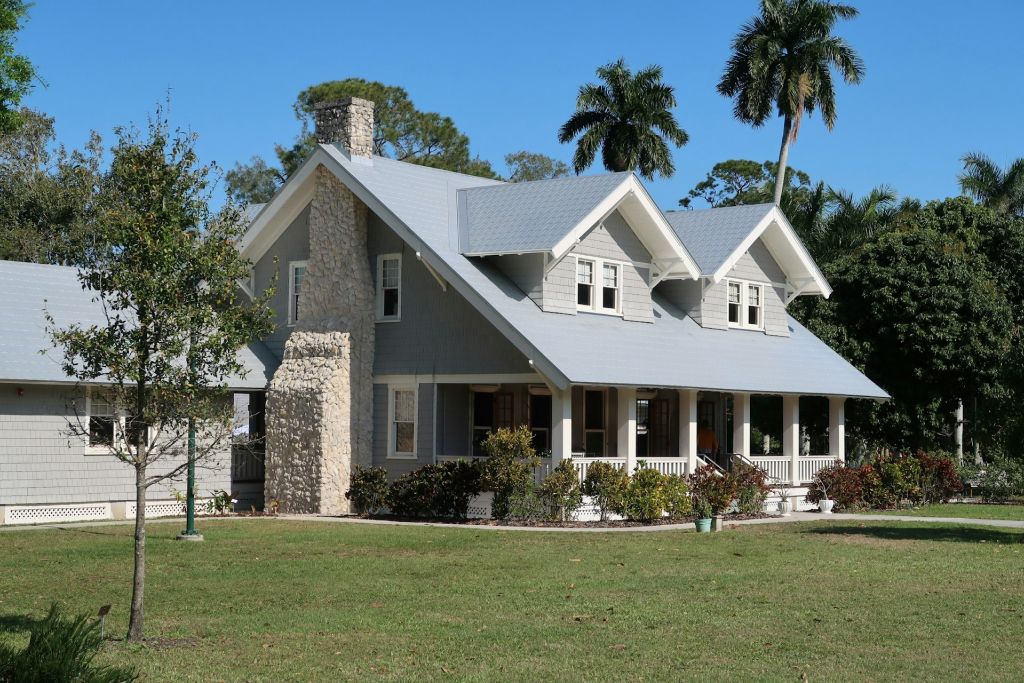
Housing Costs
Austin, TX, housing prices, at a median cost of $378,300, are quite high compared to the median in Texas, at $200,400, and that of the nation, at $240,500. Renting is more affordable. The median rent in Austin is $1,334.
Transportation Costs
Roadways in the city can get congested, with 72% of commuters driving to work. Consequently, gas is a big commodity. Austin, TX, gas prices cost between $2.69 and $2.75 a gallon.
The CapMetro service is the go-to option for getting in and around Austin, providing affordable rides on regular bus lines, rapid bus service for the 801 and 803 routes, overground rail, and public BCycle bike rentals.
The day-pass fares are cheap, but you’ll get more value from buying a seven-day pass:
- Single Ride Pass: $1.25
- 24-Hr Day Pass: $2.50
- 7-Day Pass: $11.25
- 31-Day Pass: $41.25
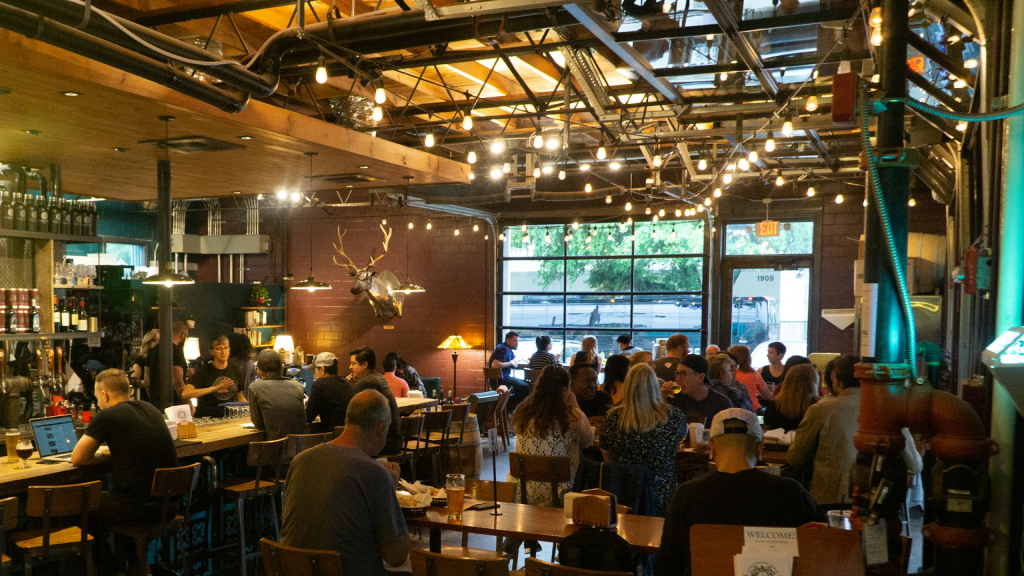
Food and Dining Expenses
Based on the table presented previously showing the cost of living in Austin, TX, food and groceries in ATX are more affordable in this city compared to the national average.
The tables below show the average costs of meals and grocery food items in Austin. You may use these to compare the costs of the same items in your current place of residence.
| Item | Average Cost |
|---|---|
| Meal at an Inexpensive Restaurant | $20.00 |
| Three-Course Meal for 2 People at a Mid-Range Restaurant | $100.00 |
| Combo Meal at a Fast-Food Restaurant | $10.00 |
| Domestic Beer (0.5-liter draught) | $6.00 |
| Imported Beer (0.33-liter bottle) | $8.00 |
| Cappuccino (regular) | $5.41 |
| Coke/Pepsi (0.33-liter bottle) | $2.81 |
| Water (0.33-liter bottle) | $2.31 |
| Milk (1 liter) | $1.07 |
| Loaf of Fresh White Bread (500g) | $3.50 |
| Eggs (regular, 12) | $3.28 |
| Rice (white, 1kg) | $3.23 |
| Local Cheese (1kg) | $13.74 |
| Beef Round Back Leg Red Meat (1kg) | $15.02 |
| Apples (1kg) | $5.74 |
| Bananas (1kg) | $1.48 |
| Oranges (1kg) | $4.62 |
| Tomatoes (1kg) | $3.39 |
| Potatoes (1kg) | $2.69 |
| Onions (1kg) | $2.84 |
| Lettuce (1 head) | $1.85 |
| Water (1.5-liter bottle) | $2.08 |
| Bottle of Wine (Mid-Range) | $15.00 |
| Domestic Beer (0.5-liter bottle) | $2.14 |
| Imported Beer (0.33-liter bottle) | $3.44 |
Healthcare Expenses
Healthcare costs in Austin, TX, are just 1% higher than the national average despite having some of the top medical facilities in the country.
| Type of Visit | Insured | Uninsured |
|---|---|---|
| Doctor’s Visit | $20 – $75 copay | $150 – $250+ |
| ER Visit | $250 – $500 copay | $1,500+ |
Monthly insurance premiums in Austin costs around $300 to $500 per person. Based on the table above, uninsured expenses can be significant, so it is best to use health-sharing programs if employer insurance is unavailable.

Education Expenses
Austin, TX, boasts excellent schools. The city has 94 public schools, of which 58 high schools made the list of best high schools in the country. ATX is also home to six colleges and universities, including the University of Texas at Austin, which placed 32nd out of 100 for best national universities in the 2024 rankings.
Utilities and Miscellaneous Costs
The monthly electric bill in Austin, TX, runs from around $60 in the winter to as high as $140 in the summer. The cost of water usage in Austin can range from a little over $7 a month for a household with only one member to $35 or more for households with several members.
The rate of internet service ranges anywhere from $50 to $96 per month, depending on the provider, while cable TV plans vary between $65 and $140, depending on the package.
Trash collection can cost from $23.30 to $50.15 a month, depending on the size of the trash receptacle used.
Exploring Austin Neighborhoods
Austin’s neighborhoods are diverse, ranging from tightly packed urban areas with plenty of shops, restaurants, and bars to quiet, family-friendly suburbs. Generally, the cost of living is higher in areas closer to the center of the city.
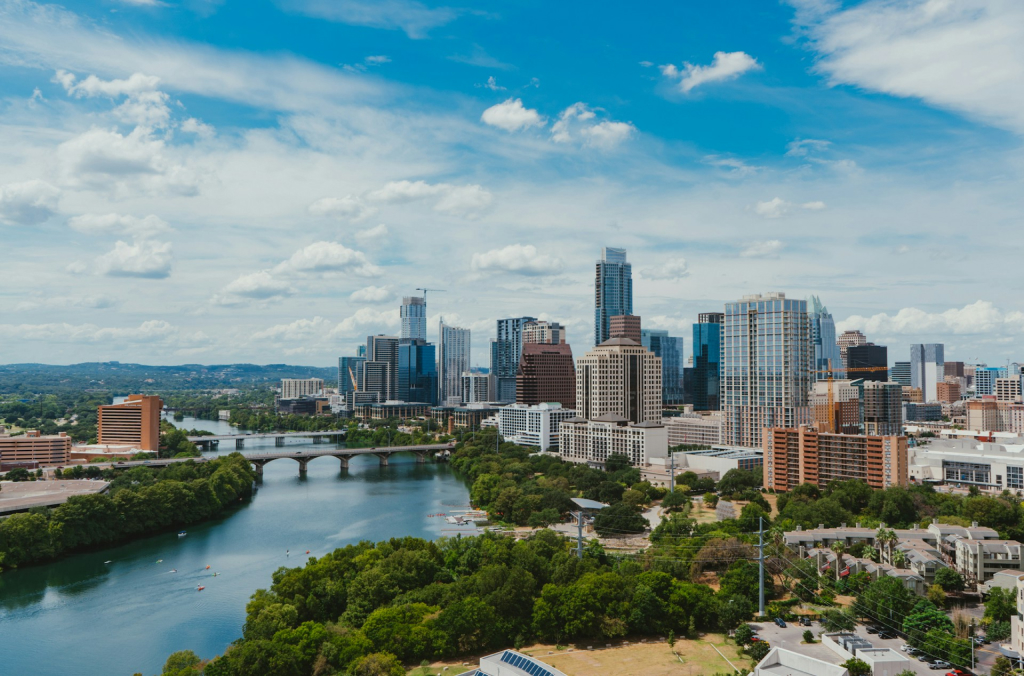
Downtown Austin
Downtown Austin is the most central, dense, and expensive part of the city. If you want to live in the middle of everything, downtown is the place to be, offering plenty of options for restaurants, bars, venues, and other points of interest.
South Congress
Known by all as “SoCo,” South Congress is one of the more eclectic areas of Austin that offers a hip and modern place to live. Housing options in the area include luxury high-rise condominiums, urban lofts, townhouses, and single-family homes.
Filled with unique boutiques, restaurants, clothing, and shoe stores, and retro shops, the neighborhood is proud to be part of the “Keep Austin Weird” movement – an Austin Independent Business Alliance slogan that supports unique small businesses.
East Austin
East Austin has a rich history, and this is reflected in the mix of historic homes and buildings throughout the area. Here, you’ll find older bungalows, including shotgun-style homes with rooms directly connected without hallways.
If you prefer modern developments, there are many options for new construction properties in East Austin as well.
Cost of Living Comparison to Other Major Cities in Texas
Now that you have an idea how much it costs to live in Austin, TX, you might be curious how affordable it is compared to other Texan cities like Houston or Dallas.
The table below shows the cost of living in Austin and other major cities in Texas in comparison to the national average:
| City | Cost of Living |
|---|---|
| Austin | 29.1% higher than the national average |
| Houston | 5.4%% lower than the national average |
| San Antonio | 7.9% lower than the national average |
| Dallas | 7.0%% higher than the national average |
| Fort Worth | 1.2%% higher than the national average |
| El Paso | 15.8% lower than the national average |
| Arlington | 1.0%% higher than the national average |
| Corpus Christi | 8.8% lower than the national average |
| Plano | 7.1% higher than the national average |
| Laredo | 15.7% lower than the national average |
| Abilene | 10.9% lower than the national average |
| Amarillo | 10.5% lower than the national average |
| Beaumont | 11.3% lower than the national average |
| Brownsville | 19.2% lower than the national average |
Conclusion
Overall, Austin is a great place to live, with friendly residents, plenty of dining and entertainment options, and a moderate cost of living.
While the cost of living in Austin, TX, is slightly higher than the national average, the city has a relatively lower cost of living compared to other highly populated city centers in the country.
If you’re planning to relocate to Austin, TX, and would like to learn about the homes for sale in the area, feel free to contact me at 512-779-6745 or joeschleis@realtyaustin.com.
Frequently Asked Questions
What are the best places to dine on a budget?
Some of the best affordable dining options in Austin are Tumble22, Delray Café, and Joe’s Bakery & Coffee Shop.
Are there good education options for families?
Yes, Austin is home to highly rated schools, including 29 public school districts, 34 charter school districts, and over 125 private schools.

